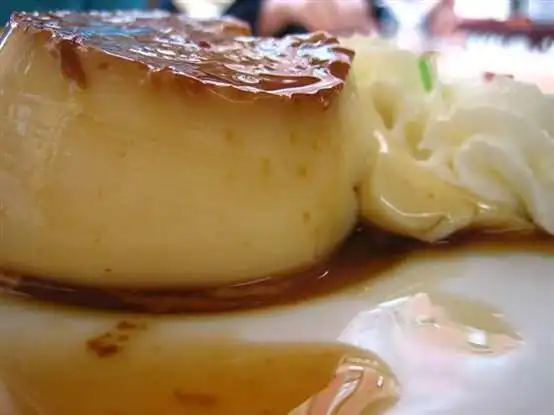Embark on a culinary voyage to Ecuador, where the aromatic symphony of spices and the succulent embrace of chicken create the delightful melody of Seco de Pollo. This traditional Ecuadorian chicken stew is not merely a dish; it’s a celebration of flavors, an homage to local ingredients, and a testament to the rich tapestry of Ecuadorian gastronomy. In this exploration, we’ll delve into the recipe for Seco de Pollo, uncovering the essential ingredients, the meticulous preparation, and the cultural significance that make this dish a cherished part of Ecuador’s culinary heritage.
Understanding Seco de Pollo: A Culinary Tapestry:
Seco de Pollo, translating to “dry chicken,” is a dish that embodies the culinary fusion of indigenous and Spanish influences in Ecuador. The term “dry” in the context of this stew refers to the reduction of the flavorful sauce that coats the succulent chicken pieces. Beyond its gastronomic appeal, Seco de Pollo is often prepared during festive occasions, family gatherings, and celebrations, making it a dish that unites people through the joy of shared meals.
Ingredients for Ecuadorian Seco de Pollo:
Seco de Pollo combines a harmonious blend of chicken, spices, and local ingredients to create a dish that captures the essence of Ecuadorian culinary artistry.
Chicken Pieces: 2.5 to 3 pounds, preferably a mix of bone-in and boneless pieces for depth of flavor.
Cilantro: 1 bunch, finely chopped. Cilantro adds freshness and a vibrant green hue to the dish.
Red Onion: 2 medium-sized, finely chopped. Red onions form the aromatic base of the stew.
Garlic: 6 cloves, minced. Garlic enhances the savory notes of the stew.
Cumin: 1 tablespoon, ground. Cumin contributes warmth and depth to the spice profile.
Achiote or Annatto Powder: 1 tablespoon. Achiote provides a subtle earthy flavor and imparts a rich color to the stew.
Ground Paprika: 1 teaspoon. Paprika adds a smoky undertone and enhances the visual appeal.
Oregano: 2 teaspoons, dried. Oregano imparts a fragrant and herbal note to the stew.
Bay Leaves: 2 leaves. Bay leaves add a subtle aromatic essence.
Tomatoes: 3 medium-sized, diced. Tomatoes provide acidity and balance to the stew.
Bell Peppers: 2, preferably different colors, sliced. Bell peppers add sweetness and a colorful element.
Beer: 1 cup. Beer contributes depth of flavor and helps tenderize the chicken.
Vegetable Broth: 2 cups. Vegetable broth forms the flavorful base of the stew.
Potatoes: 4 medium-sized, peeled and quartered. Potatoes add heartiness to the dish.
Carrots: 2 large, sliced. Carrots contribute sweetness and additional texture.
Peas: 1 cup, fresh or frozen. Peas add a burst of color and freshness.
Salt and Pepper: To taste. Balances and enhances the overall seasoning.
Preparation: Crafting the Perfect Ecuadorian Seco de Pollo:
Creating the perfect Seco de Pollo involves layering flavors, slow-cooking the chicken to tender perfection, and allowing the reduction of the savory sauce. Let’s embark on the step-by-step journey to craft this Ecuadorian chicken stew.
Step 1: Marinate the Chicken:
- Combine Chicken with Achiote, Garlic, and Cumin: In a large bowl, marinate the chicken pieces with achiote powder, minced garlic, ground cumin, and a pinch of salt. Allow the chicken to marinate for at least 30 minutes to infuse the flavors.
Step 2: Sear and Sauté:
Sear the Chicken: In a large pot, heat oil over medium-high heat. Sear the marinated chicken pieces until they achieve a golden-brown crust. This step enhances flavor and seals in juices.
Sauté Onions, Garlic, and Spices: In the same pot, sauté finely chopped red onions until they become translucent. Add minced garlic, ground paprika, dried oregano, and bay leaves. Stir to combine and let the spices release their aromas.
Step 3: Introduce Tomatoes and Peppers:
Add Tomatoes: Incorporate diced tomatoes into the pot, stirring them into the onion and spice mixture. Allow the tomatoes to soften and release their juices.
Include Bell Peppers: Add sliced bell peppers to the pot, stirring them into the aromatic base. The bell peppers contribute sweetness and color to the stew.
Step 4: Deglaze with Beer:
- Pour Beer into the Pot: Deglaze the pot by pouring beer over the vegetable and spice mixture. Scrape any flavorful bits from the bottom of the pot.
Step 5: Simmer with Broth:
- Pour Vegetable Broth: Add vegetable broth to the pot, creating a savory base for the stew. Bring the mixture to a gentle simmer.
Step 6: Add Chicken and Potatoes:
Return Chicken to the Pot: Place the seared chicken pieces back into the pot, ensuring they are nestled into the flavorful liquid.
Add Potatoes and Carrots: Introduce peeled and quartered potatoes along with sliced carrots. These vegetables contribute heartiness to the stew.
Step 7: Slow Cook to Perfection:
Simmer and Reduce: Allow the stew to simmer on low heat, covered, for approximately 45 minutes to 1 hour. This slow-cooking process ensures the chicken becomes tender, and the sauce achieves a rich consistency.
Add Peas: In the final 10-15 minutes of cooking, add fresh or frozen peas to the pot. This preserves their vibrant color and adds a burst of freshness.
Step 8: Garnish and Serve:
Sprinkle Chopped Cilantro: Before serving, sprinkle a generous amount of finely chopped cilantro over the stew. Cilantro adds a final burst of freshness.
Serve Warm: Ladle the Seco de Pollo into individual bowls, ensuring each portion includes a mix of chicken, potatoes, carrots, and peas. Serve the stew warm, allowing the aromas to tantalize the senses.
Tips for Perfect Ecuadorian Seco de Pollo:
Marination for Flavor:
- Allow Time to Marinate: Let the chicken marinate for at least 30 minutes. This allows the flavors of achiote, garlic, and cumin to infuse the meat.
Searing for Depth of Flavor:
- Golden-Brown Crust: Searing the chicken creates a golden-brown crust, enhancing the depth of flavor and contributing to the overall richness of the stew.
Layering Aromatics:
- Onions, Garlic, and Spices: Layering red onions, minced garlic, and a blend of spices creates a robust aromatic base for the stew.
Deglazing with Beer:
- Flavorful Bits: When deglazing with beer, scrape any flavorful bits from the bottom of the pot. This incorporates those savory remnants into the stew.
Slow Simmering Process:
- Tenderizing Chicken: Allow the stew to simmer on low heat for an extended period (45 minutes to 1 hour). This slow-cooking process ensures the chicken becomes tender and infused with flavors.
Adding Peas at the End:
- Preserving Freshness: Add peas in the final 10-15 minutes of cooking to preserve their vibrant color and ensure a burst of freshness.
Garnishing with Cilantro:
- Final Fresh Touch: Sprinkle chopped cilantro over the stew just before serving. Cilantro adds a final burst of freshness and visual appeal.
Serve with Accompaniments:
- Rice or Bread: Seco de Pollo pairs well with rice or crusty bread, allowing you to savor every bit of the flavorful sauce.
Conclusion: Savoring Ecuador with Seco de Pollo:
In conclusion, Seco de Pollo invites you to savor the intricate flavors and cultural richness of Ecuadorian cuisine. From the tender chicken pieces to the savory reduction of the sauce, the colorful vegetables, and the aromatic spices, each spoonful is a journey through Ecuador’s culinary tapestry.
As you embark on your own culinary adventure to create Seco de Pollo, relish in the marination process, the slow-cooking ritual, and the joy of serving a stew that encapsulates the warmth and authenticity of Ecuadorian hospitality. Whether enjoyed during festive gatherings or as a comforting meal with family and friends, Seco de Pollo brings the spirit of Ecuador to your table. So, gather your ingredients, immerse yourself in the delightful experience of crafting and savoring a pot of Seco de Pollo—one that captures the essence of Ecuador’s culinary excellence.
















